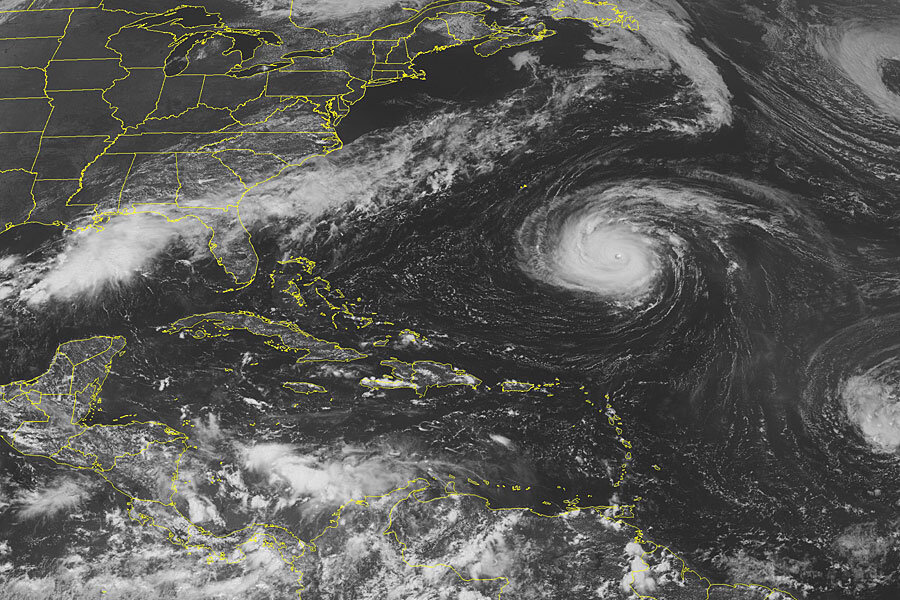Have Norwegian geologists solved the mystery of the Bermuda Triangle?
Loading...
“Bermuda Triangle, don’t go too near,” Barry Manilow warns in his saccharine 1980s pop hit named for the enigmatic region in the Atlantic Ocean legendary for the number of ships and planes that disappear in its proximity.
Now, some media reports are suggesting that the mystery behind Mr. Manilow’s admonition may be solved. Pointing to a Norwegian research abstract that details the discovery of craters at the bottom of the Barents Sea in the Arctic, British newspapers The Times and Daily Mail were somehow able to make the leaping proposal that similar craters caused “notorious” disappearances in the Bermuda Triangle during the 20th century.
But this isn’t the case. For one thing, the study, published by geologists at the University of Norway, focuses solely on craters discovered off of Bear Island, located above the northern tip of Scandinavia and about 4,000 miles from the Bermuda Triangle.
Using 3-D seismic imaging, they measured the craters to be as wide as 3,280 feet in diameter and 131 feet in depth and suggest that they were caused by methane gas eruptions from oil accumulated in shallow rocks dating back 250 million years ago.
“The crater area is still likely to represent one of the largest hot-spots for shallow marine methane release in the arctic,” they write in a preliminary summary.
Nowhere in their research, however, is the Bermuda Triangle even mentioned.
“We have discovered many large craters on the seabed in the central Barents Sea,” co-author Karin Andreassen said in a statement addressing the misinforming reports. “We have yet to publish these results, so these are preliminary. What I can say is that we are not making any links to the Bermuda Triangle.”
The methane blowouts detailed in their research, he explained, point to the time period after the last Ice Age ended – about 11,700 years ago.
And “conditions during the last ice age,” Dr. Andreassen said, “cannot be compared with what we see today.”
The researchers' statement sufficiently dismantles the any association between the craters and the Bermuda Triangle.
But beyond the geographical irrelevance of the region stretching from Miami to San Juan, Puerto Rico, and Bermuda, the so-called “mystery” itself is made up.
The term “Bermuda Triangle” was coined by American writer Vincent Gaddis in a pulp magazine article published in 1964. In it, Mr. Gaddis refers to several instances of ships, boats, and airplanes that had vanished without leaving any traces. But most of these were eventually found.
Based on the evidence, the Bermuda Triangle – a name not recognized by the US Board of Geographic Names – is no more nor less dangerous than any other part of the oceans.
“Environmental considerations could explain many, if not most, of the disappearances,” the National Oceanic and Atmospheric Administration notes on a special fact page about the region.
“There is no evidence that mysterious disappearances occur with any greater frequency in the Bermuda Triangle than in any other large, well-traveled area of the ocean.”








